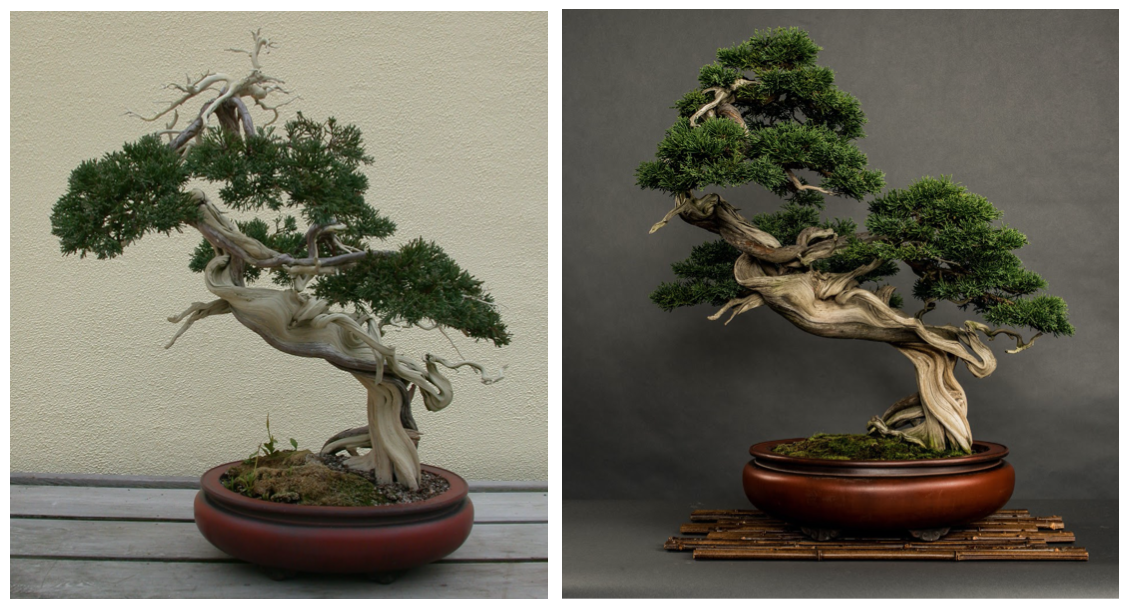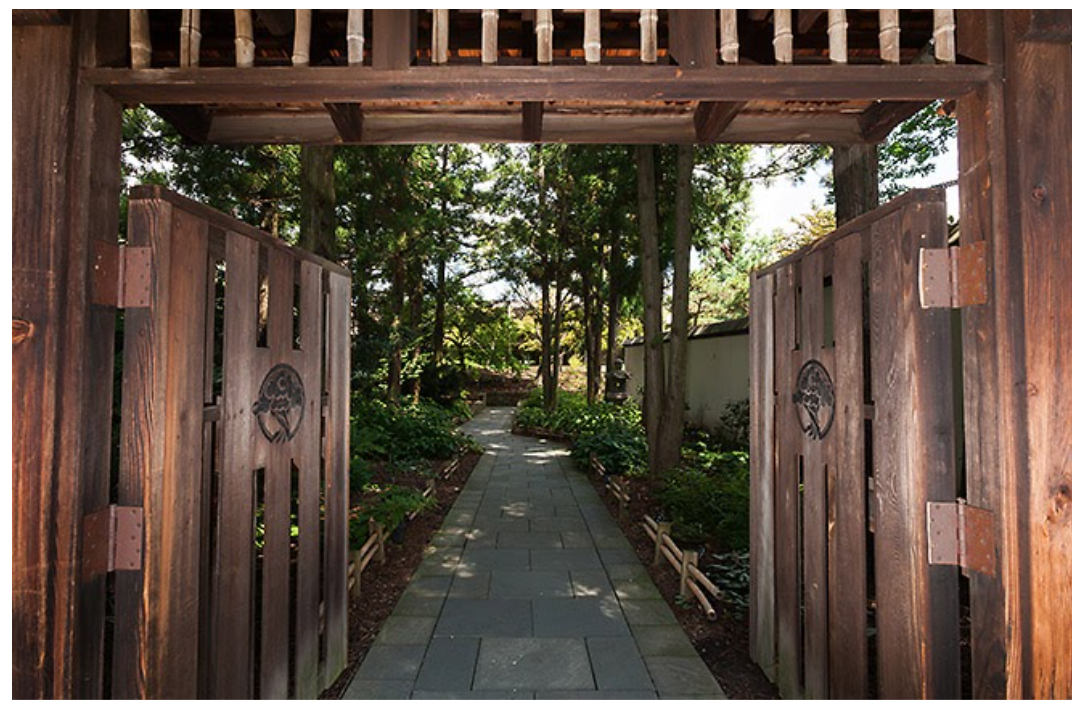The Sargent juniper, photographed by Stephen Voss for the National Bonsai Foundation Annual Report in 2019
Have you ever wondered how the National Bonsai & Penjing Museum logo came to be?
In this month’s Historical Tree Spotlight, you’ll get to know the story behind one of our Sargent junipers, Juniperus chinensis var. sargentii, known as the shimpaku juniper in Japan. While the tree is notable for its place among the first 53 bonsai that established the National Bonsai & Penjing Museum collection in 1976, it’s also the inspiration for the Museum’s logo!
History of the Sargent juniper
The juniper is a yamadori, meaning it was collected from the wild. The tree came from Itoigawa, in Japan’s Niigata prefecture. Donor Kenichi Oguchi, who ran a bonsai nursery known for its beautifully trained junipers in the neighboring city of Okaya, started training the tree in 1905. Oguchi’s employees visited the Museum in 1977 to demonstrate how to use wiring to maintain the shape of the juniper.
Museum Curator Michael James said bonsai often outgrow or might not match the style of their original containers, but the Sargent juniper has lived in the same antique Chinese pot since it was donated. He said the styling of this juniper is an excellent representation of the natural growth junipers experience in the wild, specifically in the land around Itoigawa, home to some of the most prized juniper yamadori material in Japan.
Bob Drechsler, the Museum’s first curator, wiring the juniper with two of Kenichi Oguchi’s staff members in 1977
Trees in the Niigata region grow along cliffs and mountainous areas and are exposed to heavy snows and winds. The harsh weather conditions force junipers to fold back on themselves, which is reflected in the way Museum staff have trained this Sargent juniper’s branches to harmonize with the “shari,” or deadwood on the trunk, James said.
“When training a juniper or bonsai, if you go by the guidelines, the branches often radiate out from the trunk,” he said. “But in nature, their branches fold like ribbons on top of each other. Sargent junipers also have a mounding habit in its foliage that is often cloud like.”
A story of resurrection
In the 1980s and 90s, the Sargent juniper mysteriously started to experience die-back. Finally, a curator determined the cause: a pest called the juniper twig girdler – the larvae of a small moth – had been eating away at the bonsai’s branches each year, slowly killing off parts of the tree until the apex completely died in 1998.
“In the wild, twig girdlers don't harm junipers too much because the trees only lose a few branches but are perfectly adept and still survive,” James said. “But when it’s a little bonsai, the twig girdler is devastating.”
The larvae bury themselves in tiny holes under the bark, out of reach from treatment like insecticides, he said. Curators tried protecting the tree with measures like screened cages, but the most effective method was using a magnifying glass to find the holes and using a dental pick to scrape out the larvae.
Left: The juniper in 1998 after losing its apex to the girdlers | Right: The juniper in 2019 with healthy foliage and branches
Once Museum staff discovered how to stave off the girdlers, former Museum Curator and recently retired National Bonsai Foundation Co-President Jack Sustic restyled the tree to create a new apex, and the tree is healthier than ever.
“Even to this day, that moth returns to this tree annually and often just to this tree” James said. “But when the girdlers are found early enough, with vigilant checking, the branches are not lost.”
The birth of the logo
The Museum’s logo, created for the U.S. National Arboretum and adopted by NBF, came to fruition thanks to a collaborative effort. Former Arboretum Director John Creech initiated the development of the logo to create a “visual identity” for the Museum’s collection, in imitation of Japanese family crests.
Beverly Hoge in the U.S. Department of Agriculture’s communications department and local graphic designer Ann Masters, who had traveled in Japan, partnered to create the symbol. Masters visited the original Japanese bonsai collection – quarantined in Glenn Dale, Maryland in 1975 before the Museum was built – and was inspired by this Sargent juniper.
The evolution of the NBF and Museum logo.
John Creech noted in his book, The Bonsai Saga, that the logo depicts the Sargent juniper in a double circle to reflect the “sturdiness” of the bonsai and its abundant foliage. The leftmost branch of the juniper breaks the bands of the circle, which symbolizes the “continued vigor of the trees in their new home” – the National Bonsai & Penjing Museum!
“You can see the cloud-like foliage, the twisted trunk, the ribbon-like branches and the line separating dead and live wood in the drawing,” James said. “Those aspects were the main focus when creating the final version of this logo.”
The next time you visit the Museum, be on the lookout for our logo and pass on your knowledge of the significant history of this Sargent juniper bonsai.
The entrance gate to the National Bonsai & Penjing Museum bearing the logo. Photo credit: USDA






